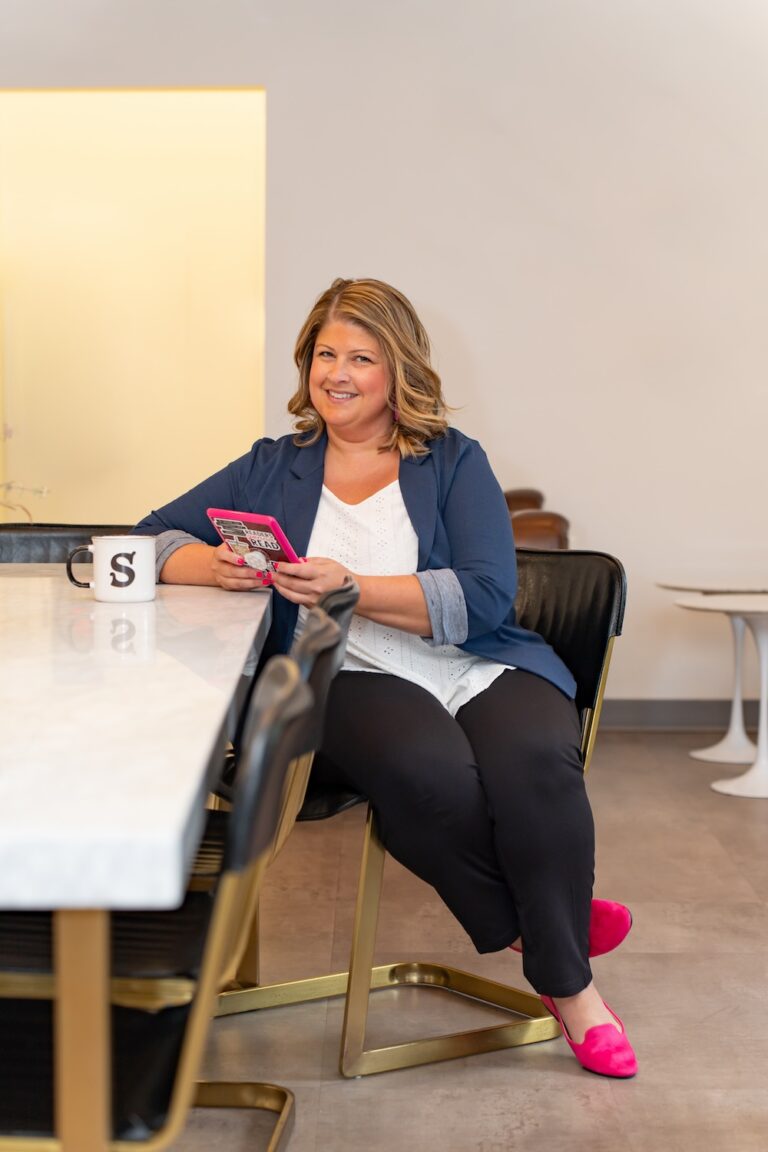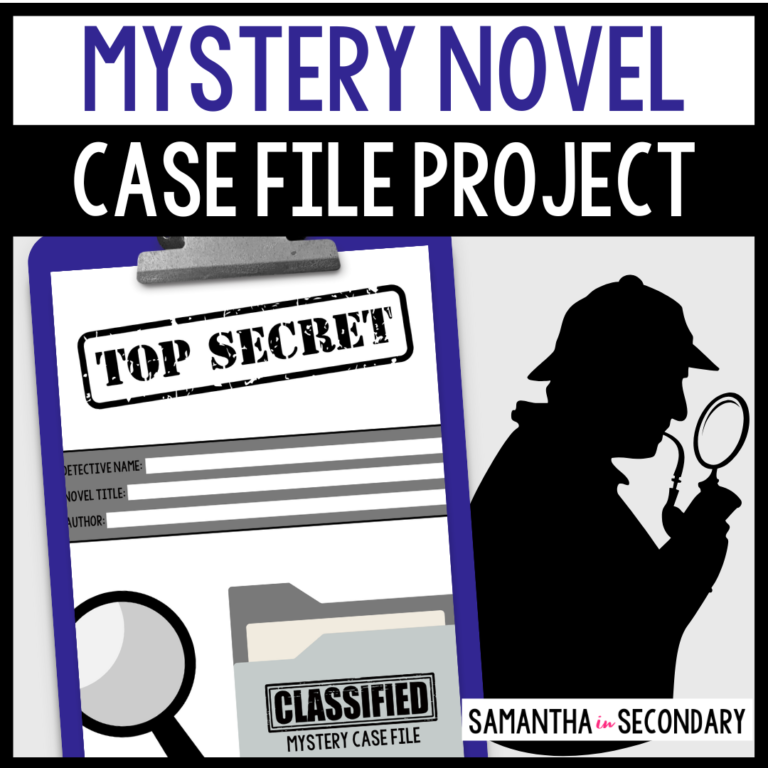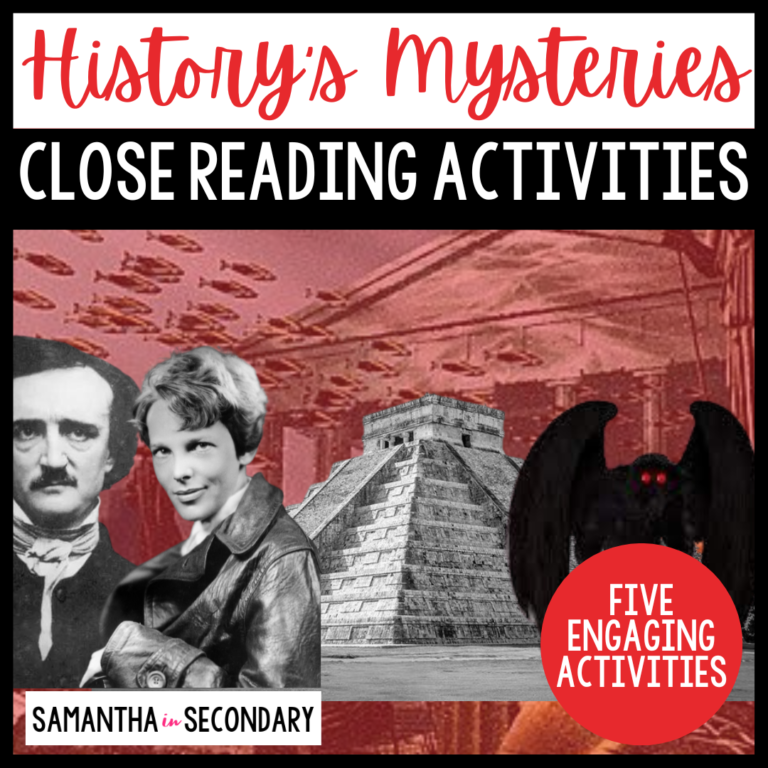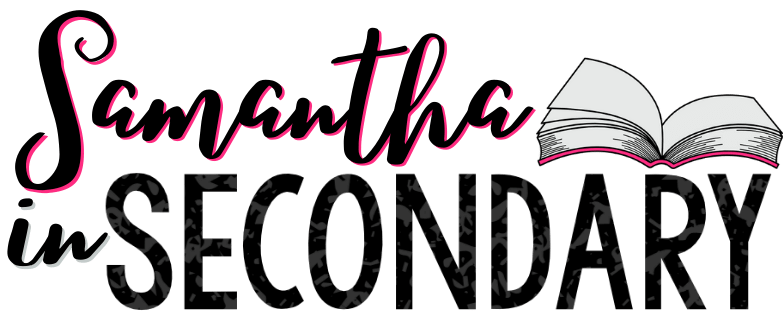I know it often feels like you just don’t have time to do all the things in your classroom. And it’s true, you don’t! But you do have plenty of time to choose a few things to do well. Today we’re going to talk about a few supplementary activities to include in your mystery unit and which skills are targeted through these purposeful additions. Hope you’re ready for some fresh ideas today, joyful readers, because I’m here to deliver.

Links & Resources:
Some links referenced here are affiliate links. Supporting the podcast through these links comes at no additional cost to you.
–> Try the Mystery Case File Project with your learners
–> Dive into History’s Mysteries in your classroom
–> Learn more about close reading in this blog post
–> Shop for your modern day literacy classroom HERE:
https://www.teacherspayteachers.com/store/samantha-in-secondary
–> For tips, book recommendations, and connection with other educators follow along on INSTAGRAM:
https://www.instagram.com/samanthainsecondary/
–> Shop my favorite YA books HERE:
Prefer to read? Open the transcript here.
Samantha 00:00
I know it often feels like you don’t have time to do all the things in your classroom, and it’s true, you don’t, but you do have plenty of time to choose a few things to do. Well, today, we’re going to talk about a few supplementary activities to include in your mystery unit, and which skills are targeted through these purposeful additions. Hope you’re ready for some fresh ideas today, joyful readers, because I’m here to deliver.
Samantha 00:26
Welcome to Creating Joyful Readers, a podcast dedicated to empowering secondary educators with the tools, strategies, and inspiration to cultivate a lifelong love of reading in their students. I’m your host, Samantha. Tune in each week as we explore the transformative power of independent reading. Delve into the latest research on literacy, dissect projects that will help your students showcase what they’ve learned in a unique way, and share curated recommendations of young adult novels that will captivate and engage your learners. Join in as we embark on a journey to create joyful lifelong readers one book at a time.
Samantha 01:04
In episode nine, I walked you through the structure of a mystery literature circle. I wanted to dive into the mystery case file project I mentioned because it’s a great example of a way to authentically assess students’ choice reading novels without using a test or quiz. Don’t get me wrong, I’m not anti quiz by any means. I think they have a time and a place, but they’re not doing us any favors when we’re trying to create joyful readers. They also aren’t serving us when it comes to having students practice important 21st century skills like creativity, information literacy, and time management. My favorite thing to do when running any type of literature circle is to create an assessment that is engaging, has plenty of real world application, and is really difficult to use the search engine or even AI to compete. This requires a lot of creativity to navigate. But luckily, over the years, I’ve gotten really good at creating these types of learning experiences, and I’m excited to pass some of that knowledge on to you on this podcast. Alright, so the focus standards for this project are going to be RL 1 cite strong and thorough textual evidence to support analysis of what the text says explicitly, as well as inferences drawn for the text. And RL 2 determine a theme or central idea of a text and analyze in detail its development over the course of a text, including how it emerges and is shaped and refined by specific details, provide an objective summary of the text. As with any project, we will probably hit others as we’re working but I like to try to stick to two or three when planning. The objective for the project is to cite key points regarding the details of the main crime or mystery from the text, including suspects, evidence, a crime, etc. You’re going to need some type of organizer for students to gather their information. I have a completed project ready for you to download from my TPT shop, Samantha in secondary. You can simply search for mystery case file or head to the show notes to find that link. My project specifically has students gather clues to create a mock up of an evidence board. It asks students to review main details from the text. We do a deep dive into the main suspect, then we do a final summary and a review. It’s enough to help students dig into the details of the text without being completely overwhelming. I’ve always gotten really great results with projects like these. Students enjoy completing them because they feel like they’re on an episode of CSI. They also love sharing them with their peers. So often we’ll have a briefing day where students present their case files again to grab this project completely done for you, you can go to my teachers pay teachers shop Samantha in Secondary, and search mystery case file or head to the show notes.
Samantha 03:29
Next, I want to discuss one of my favorite routines, and that’s close reading. This is such a powerful practice for your classroom that I try to include some relevant text in each unit. Students can practice annotation, summarizing, main idea, writing, vocabulary, and more. If you want all the details about how I teach close reading, you can head over to my blog and search the term close reading, or just head to the show notes. I have a great set of close readings that explore history’s mysteries. The bundle includes topics like Atlantis, the disappearance of the ancient Mayans, real monsters that include Sasquatch, Yeti, Mothman, etc, Amelia Earhart and the death of Edgar Allan Poe, which is a favorite of mine, because students absolutely love trying to figure out how he died. Students love these stories because they’re engaging and, yes, they’re mysterious. If you’d like to use the same activities I used in my classroom, you can go to my teachers pay teachers shop, Samantha in Secondary and search history’s mysteries to find the bundle. Compare the hallmarks of the genre along with these stories for some really compelling discussion.
Samantha 04:31
And last, adding a high interest film can be a great way to celebrate the end of the unit and to hit those speaking and listening skills. Enola Holmes is Sherlock’s teen sister and a super sleuth in her own right. This film is an easy way for students to see the genre in action. Have them apply what they’ve learned to the film. Which subgenre is it? Which clues are most relevant when trying to solve the case?
Samantha 04:54
Today, I’ve given you three supplementary activity ideas for your mystery unit. I’d love to hear what else you might add to the list. First, you can find me over on Instagram at Samantha in Secondary and send me a message to let me know. That’s it for today, joyful readers, but I’ll be back next week with a brand new genre to dive into. Hope you loved mystery as much as my students always did until next time, happy reading.
Samantha 05:17
Thanks for tuning in to creating joyful readers. I hope you found inspiration and practical strategies to ignite a passion for reading in your students. Remember every book we introduce and every reading experience we foster can transform lives and help students become lifelong readers. Follow me on social media at Samantha in Secondary for more tips book recommendations and to connect with a community of educators dedicated to making reading a joyful journey until next time. Happy reading.

The Podcast
Creating Joyful Readers
It is possible to inspire a lifelong love of reading in secondary ELA students and that’s what the Creating Joyful Readers podcast is all about.
Join us every Monday as we dive into the latest in literacy research, talk about fresh Young Adult book recommendations, and chat fresh strategies to motivate your secondary students to love reading again.
Meet Your Host
Welcome! I’m Samantha, a veteran educator with 15 years of classroom experience and a Masters in Education, dedicated to transforming how students experience reading. My passion lies in empowering ELA teachers to foster joyful, independent readers in their classrooms.
Through this podcast, I’ll share the latest literacy research, practical tips, creative project ideas, and fresh book recommendations, all designed to help you ignite a love for reading in your students and make reading a delightful adventure, not a chore.







